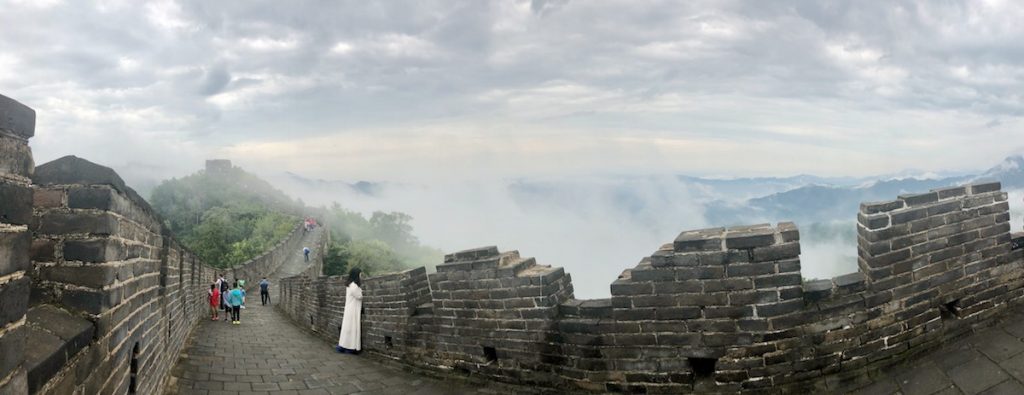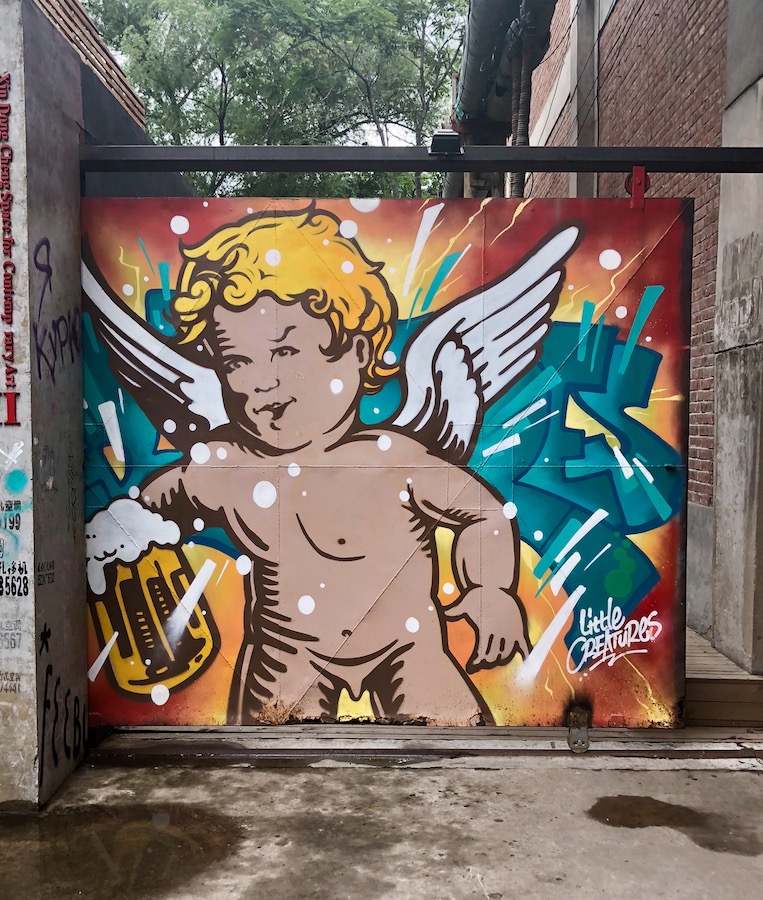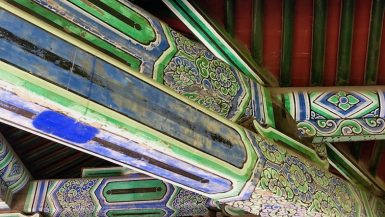August 30, 2018
When researching what to do and how to get around Beijing, I decided a private 3-day tour (through Wikibeijing) would be the most efficient way to organize our quick trip. We picked the sites and activities we wanted from a list and the tour was custom made for the two of us. Perhaps a little more expensive than putting it together ourselves, but since time was at a premium, it was well worth the extra cost.
The forecast called for clear skies, so it was only natural that we left our rain jackets in the closet and only took one umbrella, just in case. As Mr. Lee (our driver) guided the car out of the city, it began to mist and then drizzle, which ultimately became just this side of a hard rain. Guess we should have brought the jackets. Not to worry, our guide, Serena, assured us, Mr. Lee had several umbrellas in the trunk for our use.

Once through the early morning rush hour, the car broke free of the urban sprawl and we found ourselves enveloped in a world of greenery and mountains. Less than two hours outside of Beijing, we arrived at the access point below the Mutianyu section of the Great Wall. While you can take the long walking path up to the wall, the easiest way is to take the gondola. Coming down is either by return gondola or the toboggan run – unfortunately, with the rain, the second option was not available to us.
The Great Wall was begun in 221-210 B.C. after the unification of China, and snakes through the countryside for over 5,000 miles. Although meant to keep opposing armies at bay, it didn’t keep the Mongols out in the 13th century or the Manchu in the 17th century. Over time, sections of the wall have crumbled, but several have been painstakingly restored. Most tourists go to the Badaling section, which is closer to Beijing and provides views of the wall winding its way over the hills. However, we headed to the Mutianyu section, which has less of a tourist draw. The drizzling rain also helped keep some people away.
At the top of the gondola, we gleaned our first view of the wall through the mist and rolling fog. It would have been nice to have a sunny day, but the fog gave the wall an air of mystery.

We spent two hours walking up and down portions of the wall and scaling the steep steps of the watchtowers. I can’t even describe the feeling we had knowing we were walking among thousands of years of history. Even the heat, humidity, crowds of people with no concept of personal space, and screaming children didn’t deter our elation (although the last two grated on a few of our nerves).
As our time on the wall drew to a close, we double-backed towards the gondola to head down the hill. The steps back from the wall to the access point were steep and to the side of a flat pathway that was set at a tremendous angle.
Unbelievably, this was the wheelchair ramp. I’m not sure how anyone could maneuver a wheelchair either up or down such a steep ramp. And they call it accessible. I think not.
Our second destination of the day was back in Beijing – the Da Shan Zi Art District, also known as the 798 Art District. Begun in the abandoned No. 798 Electronics Factory, the contemporary art scene of workshops, galleries and studios has spread to several surrounding buildings. If it’s new, hip, happening and artistic (or, based on some of the art we saw, pseudo-artistic), you can find it at the 798.
We lunched at a small cafe and spent the afternoon going in and out of shops and studios.
After a full day of touring, we had afternoon tea and dinner (free evening snacks) at the hotel, then spent the evening reveling in the sauna, steam room and jacuzzi. It’s good to be on vacation.

























